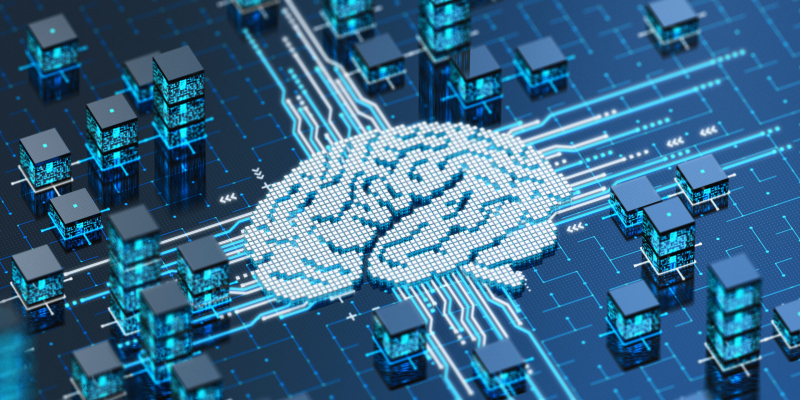Top 10 Best Analytical Essay Topics for College Students
Analytical essay topics for college students provide a platform for critical thinking and insightful analysis. This article explores the top 10 best analytical ... read more...essay topics for college students, offering a range of subjects for scholarly exploration.
-
In F. Scott Fitzgerald's "The Great Gatsby," symbolism is crucial in revealing the moral decay and elusive nature of the American Dream. This essay analyzes key symbols—the green light, the Valley of Ashes, and Gatsby's mansion—and their significance in the narrative.
First off, the green light at the end of Daisy's dock represents Gatsby's perpetual longing and the broader societal pursuit of the American Dream. It is a symbol of hope and aspiration. Yet its intangibility highlights the dream's inherent unreachability. In particular, the light's elusive nature reflects the unattainable goals individuals often chase, leading to inevitable disillusionment. Gatsby's infatuation with the light mirrors his obsession with Daisy, a love that is as distant as the light itself. This symbol critiques the illusion of the American Dream. It suggests that it is a flawed pursuit bound by materialism and idealism (Fitzgerald, 1925).
In contrast, the Valley of Ashes represents the grim reality beneath the era's glittering surface. It stands as a testament to the moral and social decay fostered by the reckless pursuit of wealth. The valley, with its industrial wasteland, is where the consequences of the characters' moral carelessness accumulate. The eyes of Doctor T.J. Eckleburg overlook this desolate landscape from a faded billboard. That symbolizes the omnipresent yet ignored ethical decay. These eyes, often interpreted as the eyes of God or the eyes of a morally bankrupt society, watch over a land where dreams turn to dust. They serve as a constant reminder of the ethical corruption overshadowed by the era's glitz and glamor (Fitzgerald, 1925).
Lastly, Gatsby's mansion is a symbol of his wealth, ambition, and the hollowness of the upper class's existence. On the surface, it represents Gatsby's success and his ability to attain the trappings of wealth. However, the mansion is more of a facade. It hides the emptiness of Gatsby's life. It embodies the superficiality of the American Dream, suggesting that even achieving wealth does not guarantee happiness. The parties at Gatsby's mansion, filled with guests who care little for their host, further illustrate the moral decay prevalent among the elite. This symbol critiques the hollow pursuit of happiness through material means and the isolation that often accompanies such a quest (Fitzgerald, 1925).
In conclusion, "The Great Gatsby" uses symbolism to provide a critical commentary on the American Dream and the 1920s moral landscape. The green light, the Valley of Ashes, and Gatsby's mansion are essential elements that contribute to the novel's thematic depth. Through these symbols, Fitzgerald critiques the era's materialism, moral decay, and the elusive nature of the American Dream.
Reference
- Fitzgerald, F. S. (1925). The Great Gatsby. New York: Scribner.

Photo by Clubes de Lectura Biblioteca Pública Ciudad Real on Flickr https://www.flickr.com/photos/bibliotecaciudadreal/41496551042/ 
Screenshot of https://www.towritewithwildabandon.com/p/reaching-for-the-green-light - Fitzgerald, F. S. (1925). The Great Gatsby. New York: Scribner.
-
The pervasive spread of technology has significantly reshaped human interaction in the modern world. This essay seeks to analyze the profound influence of technological advancements on the ways individuals communicate and connect both positive and negative aspects.
Initially, the advent of social media platforms revolutionized communication methods. These platforms allow people to connect instantly, regardless of geographical barriers. They enable users to share information, ideas, and personal moments at an unprecedented rate. However, this convenience comes at a cost. While social media facilitates connections, it often promotes shallow interactions over deep, meaningful relationships. The brevity of messages and the emphasis on quantity over quality of connections may lead to a surface-level understanding of others. Studies have shown that excessive use of social media can impact mental health, fostering feelings of isolation and inadequacy (Twenge & Campbell, 2019).
Furthermore, the rise of smartphones has transformed the way individuals engage with the world around them. Smartphones provide constant access to information and communication tools, leading to an always-on culture. This incessant connectivity can blur the lines between work and personal life, leading to increased stress and burnout. The convenience of smartphones encourages a more distracted lifestyle, where individuals are present in the body but often absent in the mind. This phenomenon has impacted face-to-face interactions, where people may be physically together but emotionally distant, engaged more with their devices than with each other (Turkle, 2017).
Moreover, technology has introduced new modes of communication, such as video calls and messaging apps, which have redefined personal and professional interactions. These tools have become particularly crucial during times of crisis, such as the COVID-19 pandemic, allowing for continued socialization and work amidst physical distancing measures. While these technologies offer a lifeline for maintaining connections, they also highlight the lack of physical presence and the nuances of non-verbal communication that are lost in digital translation. The reliance on virtual interactions can lead to a sense of disconnection and a longing for more tangible human contact (Miller, 2020).
In conclusion, the influence of technology on human interaction is multifaceted, offering both opportunities and challenges. While technological advancements have made communication more accessible and diverse, they have also introduced complexities that affect the depth and quality of human relationships. As society continues to navigate this digital landscape, it is crucial to find a balance that harnesses the benefits of technology while preserving the essence of meaningful human connection.
References
- Miller, V. (2020). Understanding digital culture. Sage.
- Turkle, S. (2017). Alone together: Why we expect more from technology and less from each other. Basic books.
- Twenge, J. M., & Campbell, W. K. (2019). The narcissism epidemic: Living in the age of entitlement. Simon and Schuster.

Photo by Yuichiro Chino on gettyimages.com https://gulfbusiness.com/why-technology-will-never-be-able-to-replace-the-power-of-human-interactions/ 
Screenshot of https://piesiecreativity.com/information-technology-and-human-communication/ -
William Shakespeare's "Hamlet" is a treasure trove for psychological analysis. The play delves deep into the psyche of its complex protagonist, Hamlet. His actions and thoughts offer a window into the human mind's intricate workings. This essay aims to unpack the psychological dimensions of Hamlet's character, focusing on his existential crisis, the Oedipal Complex, and the ambiguity of his madness.
At the heart of the play is Hamlet's profound existential crisis. His father's death and his mother's quick remarriage to his uncle Claudius throw him into a deep pool of grief. Hamlet's soliloquies reveal his inner turmoil and contemplation of life and death. His famous question, "To be, or not to be," is not merely a philosophical query. It is a reflection of his profound depression and suicidal ideation. This line underscores his existential dread and his grappling with the meaning of existence (Shakespeare, 1603).
Furthermore, Hamlet exhibits signs of what modern psychologists might identify as an Oedipal Complex. His fixation on his mother's relationship with Claudius and his disgust at their union suggest an underlying psychosexual conflict. He is tormented by visions of his mother's sexuality, indicating deep-seated familial and psychological issues. This element of his psyche provides a layer of complexity to his character. That suggests that his actions are driven not just by external events but by unconscious impulses (Jones, 1910).
Moreover, Hamlet's feigned madness sparks a debate among scholars about his mental state. His plan to "put an antic disposition on" serves as a strategic mask. But as the play progresses, the line between his real madness and his act becomes increasingly blurred. His oscillation between lucidity and apparent insanity reflects the inner chaos that dominates his mind. This duality is a central aspect of his character, making him one of literature's most complex and studied figures (Shakespeare, 1603).
In conclusion, "Hamlet" is a rich psychological portrait of a man in turmoil. From his existential angst and psychosexual conflicts to the enigma of his madness, Hamlet represents the complex nature of the human psyche. Shakespeare's play goes beyond a tale of revenge. It offers deep insights into the mind and spirit of its troubled prince. Hamlet's internal battles are universal, making his story resonate across ages.
References
- Jones, E. (1910). The Oedipus-Complex as an Explanation of Hamlet's Mystery: A Study in Motive. The American Journal of Psychology, 21(1), 72-113.
- Shakespeare, W. (1603). Hamlet. London: Oxford University Press.

Screenshot of https://owlcation.com/humanities/The-Madness-of-Hamlet-and-Ophelia-Mental-Illness-in-Shakespeare 
Screenshot of https://shakespeare.fandom.com/wiki/Hamlet -
The impact of climate change policies on developing economies is a critical and multifaceted issue. This essay seeks to analyze how such policies, while designed to mitigate environmental damage, can have profound economic implications for these nations.
Firstly, the implementation of climate change policies often requires significant financial investment. Developing countries may face challenges in allocating funds for these initiatives. They must balance immediate economic needs with long-term environmental strategies. For instance, transitioning to renewable energy sources is costly. While it promises long-term benefits, the initial investment can strain limited budgets. This financial burden can slow down other development initiatives. Therefore, it leads to a dilemma between economic growth and environmental sustainability (World Bank, 2018).
Additionally, climate change policies can affect the traditional industries of developing countries. Many of these nations rely heavily on agriculture, which is highly vulnerable to climate change. Policies aimed at reducing emissions might necessitate changes in farming practices or a move away from certain crops. These changes can disrupt livelihoods and local economies. Furthermore, industries like mining and manufacturing might face stricter regulations. They affect their productivity and profitability. The transition to greener practices is necessary but can lead to short-term economic hardships (UNDP, 2016).
Moreover, the global nature of climate change policies means developing economies must often align with international standards. This alignment can lead to positive outcomes, like access to new markets and technologies. However, it can also mean facing trade barriers if they fail to meet these standards. For countries still establishing their industries, such competition can be daunting. It can also limit their market access, affecting economic growth (IMF, 2019).
In conclusion, while the long-term benefits of climate change policies are undeniable, developing economies face unique challenges in their implementation. The financial strain, impact on traditional industries, and the need to meet international standards can pose significant obstacles. As the global community moves forward, it is crucial to support these nations through technology transfer, financial aid, and flexible policies.
References
- IMF. (2019). Fiscal Policies for Paris Climate Strategies—from Principle to Practice. International Monetary Fund.
- UNDP. (2016). Climate Change and Labor: Impacts of Heat in the Workplace. United Nations Development Programme.
- World Bank. (2018). World Bank Group Announces $200 Billion over Five Years for Climate Action. World Bank.

Photo by lovelyday12 on istockphoto.com https://www.rti.org/focus-area/economic-impact-climate-change 
Photo on shutterstock.com https://fpif.org/climate-change-and-the-limits-of-economic-growth/ -
The portrayal of gender roles in media is a powerful determinant of societal norms. This essay analyzes how media shapes perceptions of masculinity and femininity, highlighting the implications for individual identity and societal expectations.
The media often perpetuates traditional gender stereotypes through a limited perspective. Men are frequently depicted as dominant, aggressive, and emotionally reserved. While women are typically shown as passive, nurturing, and focused on appearance. These portrayals reinforce the notion that certain behaviors and roles are inherently "male" or "female." Television shows, advertisements, and movies consistently showcase these stereotypes. They can influence audience perceptions from a young age. The repetitive nature of these portrayals ingrains expectations for gender behavior, limits personal expression, and perpetuates a cycle of stereotype reinforcement (Lauzen & Dozier, 2005).
However, the media also has the power to reshape these stereotypes. Recent years have seen a gradual shift towards more diverse portrayals of gender. Some media productions have started to break away from traditional roles, showcasing women in leadership positions and men in nurturing roles. These portrayals can broaden viewers' perspectives and encourage a more flexible understanding of gender. When individuals see a wider range of behaviors and roles being represented, it can reduce the pressure to conform to traditional stereotypes (GLAAD, 2019).
Despite these positive trends, the media's portrayal of gender often still falls into traditional patterns, particularly in certain genres and platforms. The underrepresentation of women in significant roles, the focus on appearance, and the lack of diversity in gender expressions continue to be prevalent issues. The impact of these portrayals is significant. It affects everything from self-esteem and body image to career aspirations and relationship dynamics. The way individuals perceive themselves and others is heavily influenced by the media's messages. That makes it crucial to critically analyze and challenge these representations (Collins, 2011).
In conclusion, the media's portrayal of gender roles significantly influences societal norms and individual identity. While there has been progress toward more diverse and complex representations, traditional stereotypes continue to dominate many media platforms. Media producers must be mindful of the impact of their portrayals and strive for a balanced and realistic representation of gender. Similarly, viewers must critically engage with media content.
References
- Collins, R. L. (2011). Content analysis of gender roles in media: Where are we now and where should we go? Sex Roles, 64(3-4), 290-298.
- GLAAD. (2019). Where We Are on TV Report - 2019. GLAAD.
- Lauzen, M. M., & Dozier, D. M. (2005). Maintaining the double standard: Portrayals of age and gender in popular films. Sex Roles, 52(7-8), 437-446.

Screenshot of https://gender3quality.wordpress.com/2016/06/15/gender-roles-in-media/ 
Screenshot of https://www.bworldonline.com/labor-and-management/2022/03/09/434893/closing-the-gender-gap-in-the-workplace/ -
The advent of artificial intelligence (AI) has ushered in a new era of innovation and efficiency. However, it also presents complex ethical implications that society must navigate. This essay explores the ethical considerations surrounding AI, including issues of privacy, autonomy, and the potential for bias.
One primary ethical concern is the impact of AI on privacy. AI systems often require vast amounts of data to learn and make decisions. This data collection can intrude on personal privacy. For example, facial recognition technologies can track individuals without their consent. The collection and use of personal data raise questions about surveillance and the right to privacy. Society must balance the benefits of AI-driven technologies with the need to protect individual privacy rights (Zuboff, 2019).
Autonomy is another significant ethical consideration. AI has the potential to make decisions traditionally made by humans. This shift raises concerns about the loss of human control and the ability of AI to make ethical decisions. For instance, autonomous vehicles must make split-second decisions in critical situations. The programming of these decisions involves complex ethical considerations about the value of human life and the prioritization of certain lives over others. Ensuring that AI systems operate within ethical boundaries and reflect societal values is a challenge that must be addressed (Bryson, 2018).
Moreover, AI systems can perpetuate and amplify existing biases. Machine learning algorithms learn from existing data, which may contain historical biases. For instance, if an AI system is trained on data that reflects past hiring practices favoring a particular gender or ethnicity, it may replicate these biases in its decisions. The ethical implications of such biases are profound, affecting fairness, equality, and discrimination. Addressing these biases requires careful design and continuous monitoring of AI systems to ensure they do not perpetuate inequalities (Noble, 2018).
In conclusion, the rise of artificial intelligence presents significant ethical challenges that society must address. Issues of privacy, autonomy, and bias are at the forefront of the ethical debate surrounding AI. As AI continues to integrate into various aspects of life, it is crucial to develop ethical frameworks and regulations that guide its development and use.
References
- Bryson, J. (2018). Artificial Intelligence and the Future. Polity.
- Noble, S. U. (2018). Algorithms of Oppression: How Search Engines Reinforce Racism. NYU Press.
- Zuboff, S. (2019). The Age of Surveillance Capitalism: The Fight for a Human Future at the New Frontier of Power. PublicAffairs.

Photo by 3rdtimeluckystudio on shutterstock.com https://digileaders.com/the-challenges-and-ethics-of-ai-in-product-design/ 
Photo by BlackJack3D on gettyimages.com https://www.information-age.com/ai-ethics-staff-layoffs-across-big-tech-bring-safety-concerns-123502579/ -
The Civil Rights Movement in the United States was a pivotal period in the nation's history. It was marked by struggles, triumphs, and enduring lessons. This essay offers a historical analysis of the movement, focusing on its major events, the challenges faced by activists, and the lasting impact on American society.
The movement's primary aim was to end racial segregation and discrimination against African Americans. It sought to secure legal recognition and federal protection of the citizenship rights enumerated in the Constitution and federal law. The 1954 Supreme Court case Brown v. Board of Education served as a significant catalyst. The court's decision to declare state laws establishing separate public schools for black and white students unconstitutional marked the beginning of the formal process of desegregation and fueled the movement (Brown v. Board of Education, 1954).
However, the journey was fraught with challenges. Activists faced violence, imprisonment, and even death. Events such as the Montgomery Bus Boycott, the march from Selma to Montgomery, and the Birmingham campaign exemplify the movement's strategic use of nonviolent protest. These actions were often met with brutal force. However, they were pivotal in raising national and international awareness of the racial injustices in America. The media also played a crucial role in this regard. It brings the realities of racial violence into homes across the country and the world (King, 1963).
The Civil Rights Movement also catalyzed the passing of landmark legislation. The Civil Rights Act of 1964 and the Voting Rights Act of 1965 were monumental achievements. They outlawed discrimination based on race, color, religion, sex, or national origin. Besides, they prohibited racial discrimination in voting. These laws marked a significant turning point in the legal fight against racial discrimination (Civil Rights Act, 1964; Voting Rights Act, 1965).
In conclusion, the Civil Rights Movement was a complex and multifaceted struggle that reshaped American society. Its successes were not just in the legislation passed but in the awareness raised and the dialogues started. The movement laid the groundwork for subsequent rights movements and continues to inspire activists worldwide. While significant progress has been made, the journey towards equality and justice continues.
References
- Brown v. Board of Education, 347 U.S. 483 (1954).
- Civil Rights Act, Pub.L. 88-352, 78 Stat. 241 (1964).
- King, M. L. Jr. (1963). Letter from Birmingham Jail.
- Voting Rights Act, Pub.L. 89-110, 79 Stat. 437 (1965).

Photo by Alamy Stock Photo on American Photo Archive https://www.open.edu/openlearn/history-the-arts/the-american-civil-rights-movement/content-section-0 
Screenshot of https://www.britannica.com/event/American-civil-rights-movement -
Greek mythology has long been a source of inspiration in modern literature, providing a rich tapestry of themes, archetypes, and narratives. This essay explores the influence of Greek mythology on contemporary literature, examining how ancient myths have been reinterpreted and woven into modern narratives.
The enduring legacy of Greek myths is evident in their thematic depth and versatility. Modern authors often draw on these timeless stories, finding in them universal themes of human experience. For instance, the theme of hubris, or excessive pride, central to the tale of Icarus, is frequently explored in modern literature to reflect on the consequences of human overreach. Similarly, the Odyssey's themes of journey and homecoming are echoed in countless contemporary works. They underscore the timeless quest for identity and belonging (Murnaghan, 2019).
Moreover, Greek mythology provides a rich repository of characters and archetypes. They continue to resonate with modern audiences. Heroes like Achilles, Odysseus, and Hercules embody qualities that remain relevant today, such as courage, perseverance, and the complex nature of heroism. Modern literature often reimagines these characters. It places them in contemporary contexts or exploring their stories from new perspectives. This reimagining allows authors to critique or affirm the values these heroes represent, making ancient myths relevant to a modern audience (Hamilton, 1942).
The narrative structures and motifs from Greek mythology also profoundly influence modern storytelling. The hero's journey is a narrative arc involving departure, initiation, and return. It is a pattern repeated across modern literature, films, and even video games. This structure, deeply rooted in myths like those of Perseus and Theseus, provides a compelling framework for character development and plot progression. By adopting and adapting these narrative forms, modern literature taps into a shared cultural heritage. Therefore, it enriches its storytelling with the depth and resonance of ancient myth (Campbell, 1949).
In conclusion, the influence of Greek mythology on modern literature is both profound and pervasive. Through thematic exploration, the reimagining of characters, and the adoption of narrative structures, contemporary literature continues to draw from this ancient wellspring. These myths, with their exploration of human nature and the cosmos, allow modern literature to reflect on timeless questions through the lens of the ancient world.
References
- Campbell, J. (1949). The Hero with a Thousand Faces. New World Library.
- Hamilton, E. (1942). Mythology. Little, Brown and Company.
- Murnaghan, S. (2019). Greek Mythology in Modern Literature. Oxford Research Encyclopedias.

Photo by Sepia Times on gettyimages.com https://time.com/6140064/greek-myths-covid-19-pandemic/ 
Screenshot of https://owlcation.com/humanities/top-10-greekmyths -
The mental health of college students is a growing concern in today's educational landscape. This analytical essay examines the factors contributing to mental health challenges, the effects on students, and the implications for the college community.
The transition to college often coincides with the onset of mental health disorders. Students face an array of stressors including academic pressure, financial concerns, and social adjustments. This period of life is also when many mental health issues, such as anxiety and depression, commonly manifest. The pressure to perform academically and the fear of failure can be overwhelming. Students might feel isolated from their traditional support systems, exacerbating the problem. A study by the American College Health Association (2018) found that a significant percentage of college students reported experiencing overwhelming anxiety.
Additionally, the rise of digital technology and social media has reshaped social interactions. While these platforms can provide support and connection, they can also lead to comparisons, cyberbullying, and a sense of isolation. The portrayal of idealized lives on social media can contribute to feelings of inadequacy and low self-esteem. Twenge (2019) notes a correlation between increased screen time and decreased psychological well-being among young adults. It suggests a link between digital media consumption and mental health issues.
The impact of poor mental health on college students is profound. It affects academic performance, with students experiencing psychological distress more likely to have lower GPAs and higher dropout rates. The consequences extend beyond academia. Mental health issues can lead to decreased life satisfaction and can have long-term implications for careers. Furthermore, campuses face increased demand for mental health services. That stretches resources thin and underscores the need for comprehensive support systems (Eisenberg, Hunt & Speer, 2013).
In conclusion, the mental health of college students is an issue of paramount importance. Colleges need to prioritize mental health by providing adequate resources, fostering supportive communities, and integrating mental health education into the curriculum. Addressing this crisis is about creating a healthier, more supportive educational environment for all.
References
- American College Health Association. (2018). National College Health Assessment. ACHA.
- Eisenberg, D., Hunt, J., & Speer, N. (2013). Mental health in American colleges and universities: Variation across student subgroups and across campuses. The Journal of Nervous and Mental Disease, 201(1), 60-67.
- Twenge, J. M. (2019). iGen: Why Today's Super-Connected Kids Are Growing Up Less Rebellious, More Tolerant, Less Happy--and Completely Unprepared for Adulthood. Atria Books.

Screenshot of https://www.kqed.org/mindshift/60098/college-students-say-academic-pressure-is-the-most-common-cause-of-mental-health-problems-and-not-just-at-highly-selective-institutions 
Photo by Kobus Louw on istockphoto.com https://justequations.org/blog/math-and-mental-health-tackling-anxiety-and-burnout -
Pandemics pose a profound and complex threat to global markets, influencing economies in multifaceted ways. This essay analyzes the economic effects of pandemics on global markets, focusing on trade disruptions, supply chain challenges, and shifts in consumer behavior.
Pandemics can cause significant disruptions in global trade. Borders may close, and governments often impose trade restrictions to contain the spread of disease. These measures, while necessary for public health, can halt the flow of goods and services. For instance, during the COVID-19 pandemic, many countries restricted the export of medical supplies. They cause shortages worldwide. Such disruptions can lead to increased prices and reduced availability of goods, affecting both consumers and businesses (Nicola et al., 2020).
Supply chains are also vulnerable to the impacts of pandemics. Modern economies rely on complex, globalized supply chains. A disruption in one part of the world can have ripple effects globally. The sudden halt in production in one country due to a pandemic can lead to shortages of materials and products worldwide. For example, factory shutdowns in China during the early stages of COVID-19 quickly affected industries around the globe. It demonstrates the interdependent nature of global markets (Barua, 2020).
Consumer behavior changes dramatically during pandemics. Fear of contagion and government-imposed lockdowns lead to reduced consumer spending on non-essential goods and services. However, spending on essentials, such as food and healthcare, often increases. The shift to online shopping accelerates as consumers avoid physical stores. These changes can lead to significant losses in sectors like tourism, entertainment, and retail while boosting industries such as e-commerce and pharmaceuticals (Baker et al., 2020).
In conclusion, pandemics have far-reaching effects on global markets. They disrupt trade, complicate supply chains, and alter consumer behavior. The economic impact is profound, affecting every sector to varying degrees. Understanding these effects can help policymakers and businesses develop strategies to mitigate economic downturns during pandemics and build more resilient economies.
References
- Baker, S. R., Bloom, N., Davis, S. J., Kost, K. J., Sammon, M. C., & Viratyosin, T. (2020). The unprecedented stock market reaction to COVID-19. The Review of Asset Pricing Studies, 10(4), 742-758.
- Barua, S. (2020). Understanding Coronanomics: The economic implications of the coronavirus (COVID-19) pandemic. SSRN Electronic Journal.
- Nicola, M., Alsafi, Z., Sohrabi, C., Kerwan, A., Al-Jabir, A., Iosifidis, C., Agha, M., & Agha, R. (2020). The socio-economic implications of the coronavirus pandemic (COVID-19): A review. International Journal of Surgery, 78, 185-193.

Photo on shutterstock.com https://actuaries.blog.gov.uk/2021/03/02/pandemic-bonds-what-are-they-and-how-do-they-work/ 
Photo by ffikretow https://news.colgate.edu/researchmagazine/2021/05/overcoming-the-pandemics-economic-shock.html/































